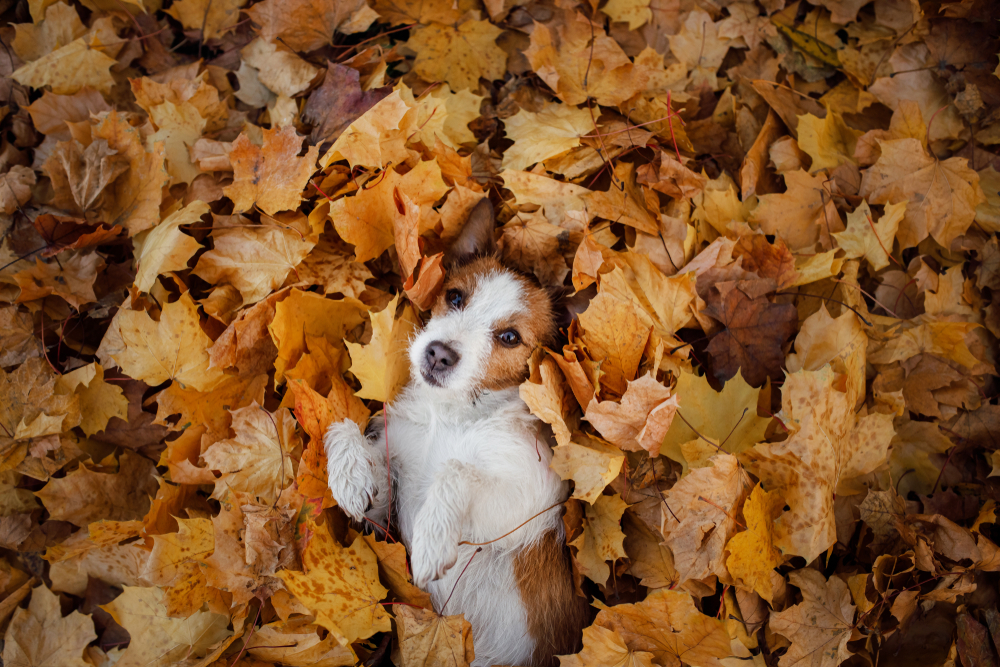How Fall Affects Your Pets

As autumn arrives, cooler breezes, shorter days, and colorful leaves change the atmosphere for humans and pets alike. While many people enjoy cozy sweaters and pumpkin-flavored treats, pets experience their own set of changes. Understanding how the fall affects your pets is essential for maintaining their comfort, safety, and overall well-being. Seasonal affects on pets are not always obvious at first glance, but subtle differences in routine, environment, and behavior can impact them significantly.
For dogs and cats, daily routines often shift in the fall. Days become shorter, which can alter their sleeping cycles and energy levels. Pets accustomed to long evening walks may now face outings in dim light or complete darkness. For some animals, especially those sensitive to light, this change can influence mood and activity patterns. Cats may become more lethargic and spend additional hours napping, while dogs might show restlessness if outdoor time feels cut short. Pet parents need to be mindful of these shifts and adapt schedules to maintain consistency for their furry companions.
Temperature Drops and Keeping Pets Warm
One of the most noticeable aspects of autumn is the dip in temperature. For pets, especially those with shorter coats or smaller body sizes, this can bring discomfort or even health risks. Keeping your pets warm as the temperatures drop is not just about comfort; it’s about protecting them from illness. Small dogs, senior animals, or breeds with thin fur such as Chihuahuas or Greyhounds often need extra insulation to manage the cold. Cozy sweaters, heated pet beds, and warm blankets can provide them with relief during colder nights.
Outdoor pets face even greater challenges as temperatures decline. If you have a dog that spends time in the yard, ensure they have proper shelter that blocks wind and keeps them off the cold ground. Cats that roam outside may begin seeking warmer places, which can sometimes include dangerous spots like under car hoods. This makes it crucial to bring them indoors more frequently or provide safe, insulated spaces. By taking proactive steps, you can ensure your pet’s health and prevent them from succumbing to seasonal chills.
Seasonal Hazards in the Fall
While fall brings natural beauty, it also introduces unique hazards for pets. Piles of fallen leaves may look inviting, but dampness can harbor mold or bacteria that upset a dog’s stomach if ingested. Additionally, some seasonal plants and decorations are toxic. Mums, chrysanthemums, and certain types of gourds can make pets sick if they nibble on them. Even common autumn treats like chocolate or baked goods flavored with nutmeg and cinnamon are dangerous for both dogs and cats.
Another seasonal risk is antifreeze, often used in vehicles during colder months. Antifreeze is highly toxic and has a sweet taste that unfortunately attracts animals. Just a small amount can be fatal, making it critical to store it securely and clean up any spills immediately. Fallen acorns and mushrooms can also pose poisoning risks for curious pets. By staying alert to these hazards, pet owners can ensure their companions remain safe during outdoor adventures. Knowing what to know as the seasons change means understanding not only the delights of fall but also the hidden dangers it can bring.
The Impact of Reduced Daylight
Daylight plays an important role in regulating your pet’s internal rhythms. As fall progresses, the days grow shorter, and this can influence your pets’ behavior. Dogs accustomed to long afternoon play sessions may find their time outdoors reduced. This can lead to pent-up energy, especially for high-energy breeds like Border Collies or Labrador Retrievers. Without enough exercise, pets may turn to destructive behaviors such as chewing or excessive barking. Finding creative indoor activities becomes a necessity when outdoor time is limited.
Cats, too, respond to changes in daylight. Many indoor cats mimic the patterns of wildlife, becoming more active at dawn and dusk. As those twilight periods shift with the season, you may notice changes in their activity levels. Some pets may also experience mood shifts akin to seasonal affective disorder in humans. Providing stimulating toys, interactive playtime, and adequate exposure to natural light through windows can help pets adjust to reduced daylight. The transition can be smoother if owners stay consistent in feeding and play schedules despite the changing hours.
Supporting Your Pets Through Seasonal Change
Supporting pets through autumn involves balancing warmth, activity, and awareness of hazards. Indoor play sessions such as fetch in a hallway, puzzle feeders, or laser toys for cats can provide both mental and physical stimulation. Regular grooming is also essential since many pets shed their summer coats to make way for thicker winter fur. Brushing helps prevent matting, reduces shedding in the home, and stimulates skin health during this transitional season.
Nutrition also plays a role. As temperatures drop, some pets may require more calories to maintain body heat, while others, particularly indoor pets with less activity, might need careful portion control to avoid weight gain. Monitoring their diet ensures they maintain a healthy balance throughout the season. Routine veterinary visits are particularly valuable in fall, as they provide an opportunity to catch health concerns early and discuss preventative care. Vaccines, flea and tick prevention, and even arthritis checkups for senior pets are all part of ensuring their well-being during seasonal change.
Conclusion
Autumn is a season of transformation, and your pets experience its effects in ways both visible and subtle. From adjusting to cooler temperatures to navigating seasonal hazards, pets rely on their owners to help them thrive. Seasonal affects on pets can include changes in mood, energy levels, and health risks, all of which are important to consider. By paying attention to how the fall affects your pets, you can take proactive steps to ensure their comfort and safety. What to know as the seasons change includes monitoring daylight patterns, preventing exposure to harmful plants and chemicals, and making small adjustments to routines. Keeping your pets warm as the temperatures drop and providing them with enrichment will help them remain happy, healthy, and ready to enjoy the cozy months ahead. Fall can be just as delightful for pets as it is for people, as long as their needs are met with care and attention.
Need a Small Animal Hospital in Pauls Valley, OK?
At Williamsburg Small Animal Hospital, we are dedicated to ensuring the well-being of your pets, especially during the scorching summer months. If you have any concerns about keeping your furry friends safe and healthy in the heat, don’t hesitate to reach out to us. Our team of experienced veterinarians is here to provide you with personalized advice and top-notch care. Contact us today to schedule an appointment or to learn more about our services. Let’s work together to keep your pets safe and happy all summer long!
